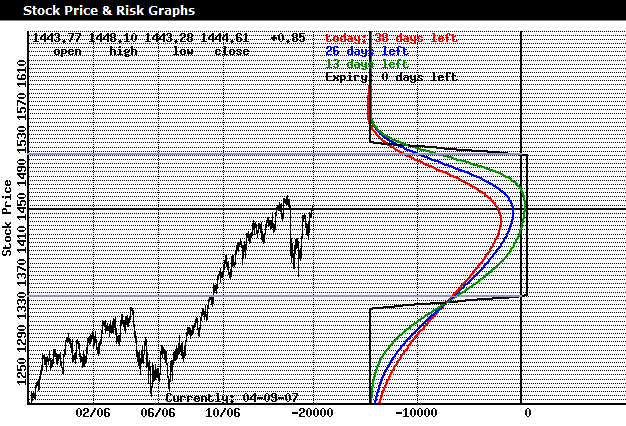Index Option Strategies SPX Bull Call Spreads
Post on: 4 Июнь, 2015 No Comment

SPX Bull Call Spreads For Moderately Bullish Investors
- An investor who is moderately bullish on the Standard & Poors 500 index (SPX) and wants to profit from a rise in its level
- An investor who wants to reduce the cost of buying an SPX call in return for limited upside profit potential
- An investor who would like to take advantage of the leverage that options can provide, and with a limited dollar risk
A bull call spread is one four types of vertical spreads, all of which are characterized by both limited profit as well as limited loss potential. This spread allows an investor the opportunity to profit to a limited extent from a limited move in the level of the SPX, while having less capital at risk than with the outright purchase of a call option.
Definition
An SPX bull call spread involves the purchase of an SPX call, and the simultaneous sale of another SPX call with the same expiration month but with a higher strike price. Both of these transactions open a position. That is, the investor is at the same time making an opening purchase (and becomes long) the lower-strike call and an opening sale of (and becomes short) the higher-strike call. Because the long, lower-strike SPX call that is being purchased will always cost more than the premium received from the higher-strike calls sale, the bull call spread is termed a debit spread. An investor will always pay a net debit, or will buy (and become long) the spread to establish one.
The long, purchased call provides the bullish opportunity to profit on the SPXs upside. By selling the higher-strike short call, the investor receives premium with two results. First, this premium, which the investor keeps, will reduce the net cost of the purchased long call. But second, as a trade-off the short call will cap that long calls upside profit potential because of the likelihood of assignment if the SPX index is above the short calls strike price at expiration.
To close out this long bull call spread position before expiration, an investor may sell the spread, or simultaneously sell the lower-strike long call (if it has value) and buy back the higher-strike short call, taking in a net premium amount, or a net credit. By doing so an investor can either realize a net profit on the long spread or cut a loss. Bull call spreads are commonly established (purchased) and closed out (sold) as a package, i.e. the two options bought and sold in one transaction.
The maximum, upside profit for the SPX bull call spread is limited and will generally occur at expiration when the SPX settles at above the short calls strike price. At this point, the long call will be worth its intrinsic value (cash settlement amount), but if the short call expires in-the-money the investor can expect assignment and have to pay its cash settlement amount. The maximum profit amount can be calculated in advance as the difference between the two call strike prices, less the total premium initially paid for the spread, times the $100 multiplier.
On the downside, however, the financial risk is limited to the total premium paid for the spread, no matter how low the SPX declines, and both the long and the short calls expire with no value. This will occur if SPX settles at or below the long call (lower) strike price. The break-even point at expiration is an SPX index level equal to the lower (long) call strike plus the premium paid for the spread. The effect of volatility and time decay on this strategy varies depending on whether the options are in- or out-of-the-money and the time remaining until expiration.
NOTE: SPX options are European-style; they may not be exercised until the last business day before expiration, or the day following their last trading day. Assignment, therefore, cannot be received until expiration.














